Engage Elementary Minds: A Deep Dive into Shapes for Young Learners


Creative Activities
Shapes have always intrigued young minds with their different sizes and structures. Let's embark on a journey of creativity and learning together! One engaging craft idea involves creating 3D shapes using clay or playdough. Young learners can mold spheres, cubes, and pyramids, enhancing their tactile and spatial skills simultaneously. Detailed step-by-step guides will be provided to ensure children can replicate these crafts easily. This hands-on activity not only fosters creativity but also helps in visualizing various geometric forms. Moreover, the educational value of these craft activities goes beyond just fun: they improve fine motor skills and promote problem-solving abilities in a playful setting.
Fun Quizzes
Ready to test your knowledge on shapes? Our fun quizzes cover a wide array of topics, from identifying basic shapes to understanding the properties of complex geometrical figures. These quizzes feature diverse question types, including multiple-choice, true or false, and matching exercises, keeping children engaged and challenged throughout. By participating in these quizzes, young learners get to reinforce their understanding of shapes while enjoying a fun and interactive learning experience. The quizzes serve as a valuable tool for consolidating knowledge and applying it in a practical context.
Fact-Based Articles
Delve into our fact-based articles that offer a treasure trove of information on various shape-related topics. These articles cover a multitude of subjects, such as the history of specific shapes, their significance in art and architecture, and practical applications in everyday life. Presented in an engaging and easy-to-understand format, our articles aim to spark curiosity and deepen children's understanding of shapes. Additionally, we provide additional resources like links to related articles and external websites for further exploration, enabling young learners to expand their knowledge beyond the confines of the guide.
Introduction to Shapes
In this comprehensive guide for elementary school children, understanding basic shapes serves as the foundation for exploring the fascinating world of geometry. The ability to recognize and distinguish shapes is not only essential in mathematics but also plays a crucial role in various real-life applications, from architecture to technology. By comprehending basic shapes like circles, squares, triangles, and rectangles, young learners develop spatial reasoning skills, critical thinking, and problem-solving abilities. This section aims to provide a solid introduction to the concept of shapes and their significance in everyday life.
Understanding Basic Shapes
Circle
The circle, a fundamental shape with no angles or corners, is a key component in geometric discussions. Its symmetrical nature makes it a versatile shape commonly found in nature, art, and design. Circles are prevalent in everyday objects, from wheels to clock faces, showcasing their practical applications. Understanding the properties of circles, such as their radius and diameter, lays the groundwork for comprehending more complex geometric forms later on. Although simple in structure, circles play a crucial role in geometry and mathematics.
Square
The square, with four equal sides and four right angles, epitomizes symmetry and balance. Its regularity and simplicity make it a popular choice for illustrating basic geometric principles. Squares are building blocks for more intricate shapes, emphasizing the importance of mastering their properties early on. By exploring squares, children can grasp concepts like area, perimeter, and diagonals, enhancing their mathematical acumen. Incorporating squares into shape-related activities can foster creativity and analytical thinking among young minds.
Triangle
Triangles, with their three sides and three angles, introduce children to the concept of polygonal shapes. Their diverse configurations, including equilateral, scalene, and isosceles triangles, offer a myriad of learning opportunities. Understanding triangle properties like angles summing up to 180 degrees and the Pythagorean theorem broadens children's understanding of spatial relationships and mathematical concepts. Through exploring triangles, young learners sharpen their problem-solving skills and geometric reasoning abilities.
Rectangle
Rectangles, characterized by four right angles and opposite sides of equal length, are common geometric figures encountered in everyday objects. Their regularity and familiarity make them an integral part of geometric discussions. Rectangles play a vital role in architectural design, spatial organization, and visual compositions. By delving into rectangles, children gain insights into concepts like area, perimeter, and tessellations, enhancing their geometric literacy. Unveiling the intricacies of rectangles cultivates children's visual acuity and spatial awareness.
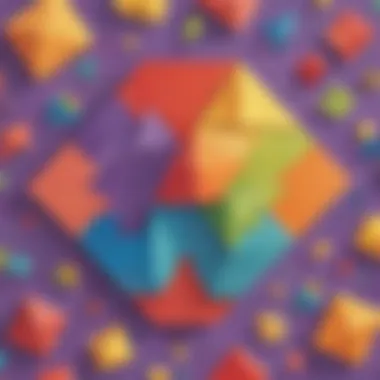
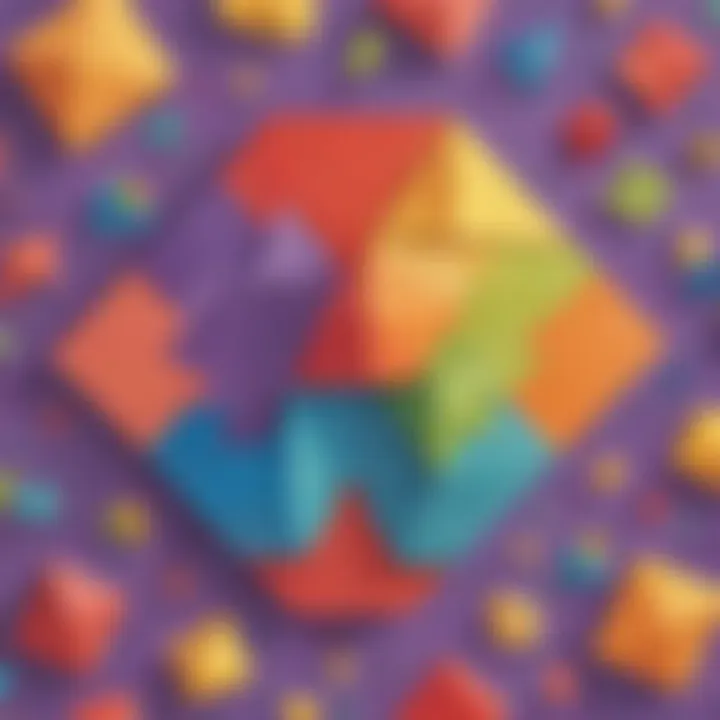
Properties of Shapes
In this article, the focus is on unveiling the intricacies of different shapes and their properties. Understanding the properties of shapes is crucial as it lays the foundation for exploring more advanced geometric concepts. By delving into the properties of shapes, young learners can develop spatial awareness, critical thinking skills, and a deeper appreciation for the mathematical principles that govern the world around them. Through the exploration of lines, angles, and symmetry, children can enhance their problem-solving abilities and analytical thinking. Every shape has its set of unique attributes that contribute to its identity and significance in various contexts.
Lines and Segments
Types of Lines
Types of lines play a fundamental role in understanding the structure and characteristics of shapes. Lines like straight, curved, horizontal, and vertical provide a framework for organizing shapes and defining boundaries. Straight lines bring a sense of stability and precision, while curved lines introduce fluidity and movement. Horizontal lines suggest tranquility, while vertical lines evoke strength and stability. Understanding the diverse nature of lines enables children to identify patterns, create shapes, and express themselves artistically.
Line Segments
Line segments are essential components within geometric shapes, delineating boundaries and forming the basis for measurements. Line segments differ from lines by having two distinct endpoints, offering a clear and finite length. These segments are crucial in determining perimeter, area, and other geometric properties of shapes. By grasping the concept of line segments, children can engage in more complex shape constructions and calculations, extending their mathematical aptitude and problem-solving skills.
Ray
Rays extend infinitely in one direction from a specific point, embodying a sense of endlessness and directionality. Rays are distinct from line segments as they have only one endpoint, emanating outward indefinitely. Rays are integral in geometric constructions, angles, and symmetry, serving as visual indicators for various shape properties. By understanding rays, children can visualize spatial relationships, explore angular concepts, and engage in more sophisticated geometrical manipulations, fostering a deeper understanding of shapes and their attributes.
Angles in Shapes
Angles are pivotal elements in shape analysis, delineating the intersection of lines and influencing the overall structure of shapes. Acute angles measure less than 90 degrees, conveying a sense of sharpness and compactness. Obtuse angles exceed 90 degrees, exhibiting openness and expansiveness. Right angles form perfect L-shapes, symbolizing stability and balance. By exploring different angles in shapes, children can discern patterns, classify shapes, and infer properties based on angle measurements. Understanding angles enriches spatial reasoning skills, enhances visual perception, and nurtures mathematical fluency among young learners.
Symmetry in Shapes
Symmetry serves as a captivating aspect of shape exploration, highlighting balance and harmonious arrangements within shapes. Line of symmetry divides shapes into two identical parts, mirroring each other across the axis. Rotational symmetry involves rotational transformations that preserve the shape's appearance at regular intervals. Bilateral symmetry signifies a reflectional symmetry along a central axis, creating a mirror image. Symmetry in shapes adds aesthetic appeal, architectural integrity, and mathematical precision, captivating children's visual senses and fostering a deeper appreciation for the inherent order and balance found in geometrical forms.
Applications of Shapes
Shapes play a crucial role in various aspects of our lives, offering both aesthetic appeal and functionality. In this section, we will delve into the significance of shapes within different contexts, shedding light on their practical applications and implications. By understanding how shapes manifest in everyday scenarios, children can grasp the relevance of geometry in the world around them. Exploring the diverse applications of shapes enables young learners to appreciate the interconnectedness of mathematics and real-world phenomena.
Shapes in Everyday Life
Shapes in Architecture
Shapes in architecture are fundamental elements that define the physical structures we inhabit. The incorporation of geometric shapes in architectural design not only enhances visual appeal but also influences structural integrity. Rectangles, circles, and triangles are common architectural shapes utilized in buildings to create symmetrical facades and functional spaces. Understanding shapes in architecture aids children in recognizing the thought and precision required to construct stable and aesthetically pleasing edifices.
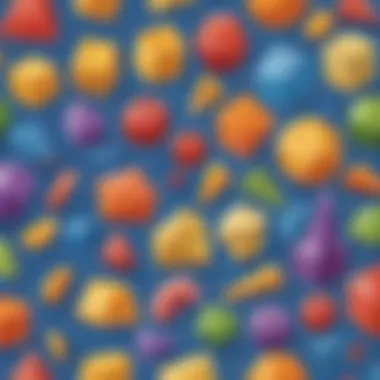
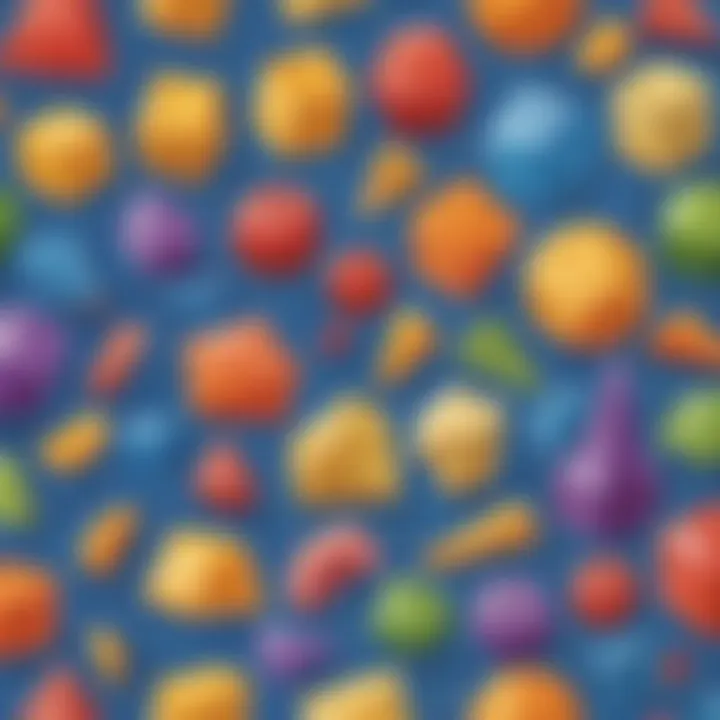
Shapes in Nature
Shapes in nature exhibit a remarkable display of organic geometry, showcasing patterns that have inspired human creations for centuries. The symmetry of petals in flowers, the spirals of seashells, and the hexagonal structure of beehives exemplify the inherent beauty and efficiency of natural shapes. By observing and appreciating shapes in nature, children can develop a deeper connection to the environment and recognize the mathematical principles embedded in the natural world.
Shapes in Technology
In the realm of technology, shapes serve as the foundation for innovative designs and technological advancements. From circuit boards composed of intricate shapes to the aerodynamic forms of vehicles, geometry plays a vital role in shaping modern gadgets and machinery. By exploring shapes in technology, children gain insight into how geometric concepts are applied to improve functionality and optimize product performance, fostering a keen interest in the intersection of mathematics and technological innovation.
Shapes in Art and Design
Geometric Art
Geometric art showcases structured compositions based on mathematical principles, employing shapes to create visually captivating pieces. The precision and balance inherent in geometric art appeal to both artistic sensibilities and mathematical logic. By engaging with geometric art, children can enhance their spatial perception and cultivate an appreciation for the harmony achieved through geometric forms.
Mosaic Patterns
Mosaic patterns intricately combine various shapes to form intricate designs and decorative motifs. The tessellating nature of mosaic shapes allows for endless creative possibilities, blending symmetry and cohesion in visually stunning arrangements. Exploring mosaic patterns enables children to understand the artistry and meticulous detail involved in creating cohesive compositions from diverse geometric elements.
Shape Compositions
Shape compositions involve arranging geometric shapes in harmonious layouts to convey diverse visual messages or evoke specific emotions. The strategic placement of shapes influences the overall aesthetic impact of compositions, guiding the viewer's gaze and interpretation. By exploring shape compositions, children can experiment with arranging shapes to convey meaning and evoke artistic expressions, fostering creativity and spatial awareness.
Shapes in Mathematics
Geometry
Geometry forms the cornerstone of mathematical exploration, introducing students to the study of shapes, sizes, and spatial relationships. The application of geometric principles enables the precise analysis of shapes in various contexts, from basic polygons to complex three-dimensional figures. By engaging with geometry, children develop critical thinking skills and problem-solving abilities, laying a solid foundation for advanced mathematical concepts and applications.
Spatial Reasoning
Spatial reasoning refers to the cognitive ability to perceive and manipulate visual information in a spatial context, essential for solving puzzles and understanding complex spatial arrangements. Developing spatial reasoning skills through shape recognition and manipulation sharpens children's mental agility and enhances their capacity to visualize spatial relationships accurately. By honing spatial reasoning, children can navigate spatial challenges with confidence and proficiency, promoting a holistic understanding of shapes in diverse contexts.
Graphical Representations
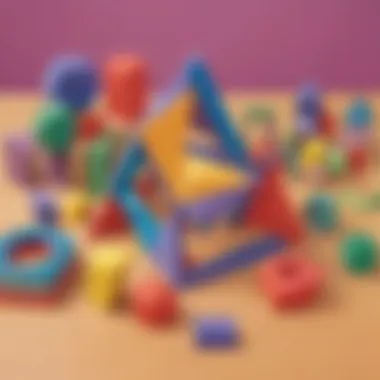

Graphical representations utilize shapes to communicate quantitative and qualitative data effectively, visualizing information in a comprehensible manner. Shapes such as bars, circles, and lines serve as visual tools to illustrate statistical trends, comparisons, and relationships. By interpreting graphical representations, children can decipher complex data sets and draw meaningful conclusions, enhancing their data literacy and analytical skills in a visually engaging manner.
Fun Activities with Shapes
Introducing fun activities with shapes plays a crucial role in engaging elementary school children in the exploration of geometric forms. By incorporating interactive and entertaining tasks related to shapes, young learners can grasp concepts more effectively. These activities not only enhance cognitive abilities but also nurture creativity and problem-solving skills in children. Fun activities with shapes serve as a practical and enjoyable way to solidify understanding and appreciation for the world of geometry.
Tangram
Tangram, a traditional Chinese puzzle consisting of seven geometric pieces, fosters spatial awareness and critical thinking among children. The unique shapes of Tangram pieces challenge young minds to create various figures by rearranging the parts. This activity cultivates visual-spatial skills and encourages strategic thinking in a playful manner. The versatility of Tangram makes it a popular choice for this article, stimulating creativity and geometric reasoning in an interactive context.
Shape Bingo
Shape Bingo offers a fun and educational twist to the classic game, incorporating geometric shapes to reinforce recognition and naming of various figures. By pairing shapes with their corresponding names, children develop an understanding of shape properties and attributes through a game format. The interactive nature of Shape Bingo makes it an engaging tool for teaching and practicing shape vocabulary, making learning enjoyable and effective for young learners.
Pattern Blocks
Utilizing pattern blocks as a hands-on activity enhances spatial reasoning and geometry skills in children. These colorful blocks allow students to create and replicate patterns using different shapes, promoting mathematical thinking and problem-solving abilities. Pattern Blocks provide a tactile and visual aid for understanding geometric concepts, making them a valuable addition to this article's exploration of fun activities with shapes.
Shape Drawing and Coloring
Incorporating shape drawing and coloring activities introduces a creative dimension to exploring shapes for elementary school children. By encouraging young learners to create their own shapes, they not only engage in artistic expression but also reinforce their grasp of geometric forms. Coloring worksheets further enhance fine motor skills and attention to detail while reinforcing shape recognition in a fun and interactive manner.
Create Your Own Shapes
Encouraging children to create their own shapes empowers them to think outside the box and explore endless possibilities in geometry. This activity allows for individual expression and interpretation of shapes, sparking imagination and innovation. By highlighting the unique characteristics of each custom shape, children develop a deeper appreciation for the diversity and versatility of geometric forms, fostering creativity and originality.
Coloring Worksheets
Coloring worksheets provide a structured and stimulating activity for children to apply their knowledge of shapes in a visual way. By coloring different shapes and patterns, young learners reinforce shape identification and color recognition simultaneously. This hands-on approach not only enhances artistic skills but also solidifies understanding of geometric concepts through a creative outlet.
Outdoor Shape Scavenger Hunts
Engaging in outdoor shape scavenger hunts introduces an element of exploration and discovery to the learning experience. By venturing into nature and actively seeking out shapes in the environment, children develop observational skills and an appreciation for geometry in the world around them. Shape hunts promote outdoor engagement and physical activity while reinforcing shape recognition and spatial awareness in a dynamic and adventurous setting.
Identifying Shapes in Nature
Observing and identifying shapes in nature instills a sense of connection between geometric concepts and the natural world. Encountering shapes like circles in tree trunks or triangles in bird beaks enhances children's awareness of shapes in their environment, linking theoretical knowledge to real-life instances. This hands-on approach to shape recognition bridges the gap between classroom learning and practical application, encouraging curiosity and exploration.
Shape Hunt Checklist
Utilizing a shape hunt checklist provides structure and guidance during outdoor explorations, ensuring children focus on specific shapes and their characteristics. By following a checklist that outlines various shapes to find, young learners engage in a systematic search that hones their observational skills and attention to detail. The checklist acts as a tool for organizing the shape hunt activity, making it educational and purposeful while encouraging active participation and shape discovery.







